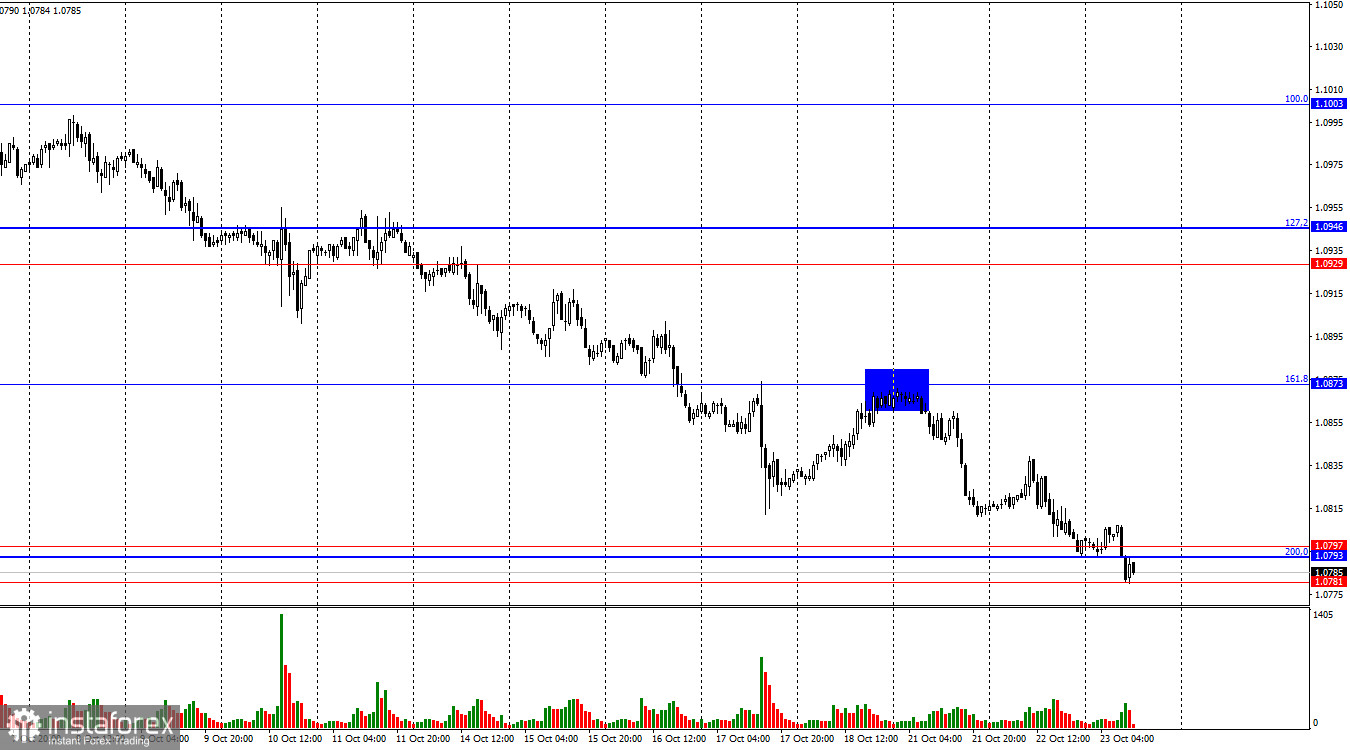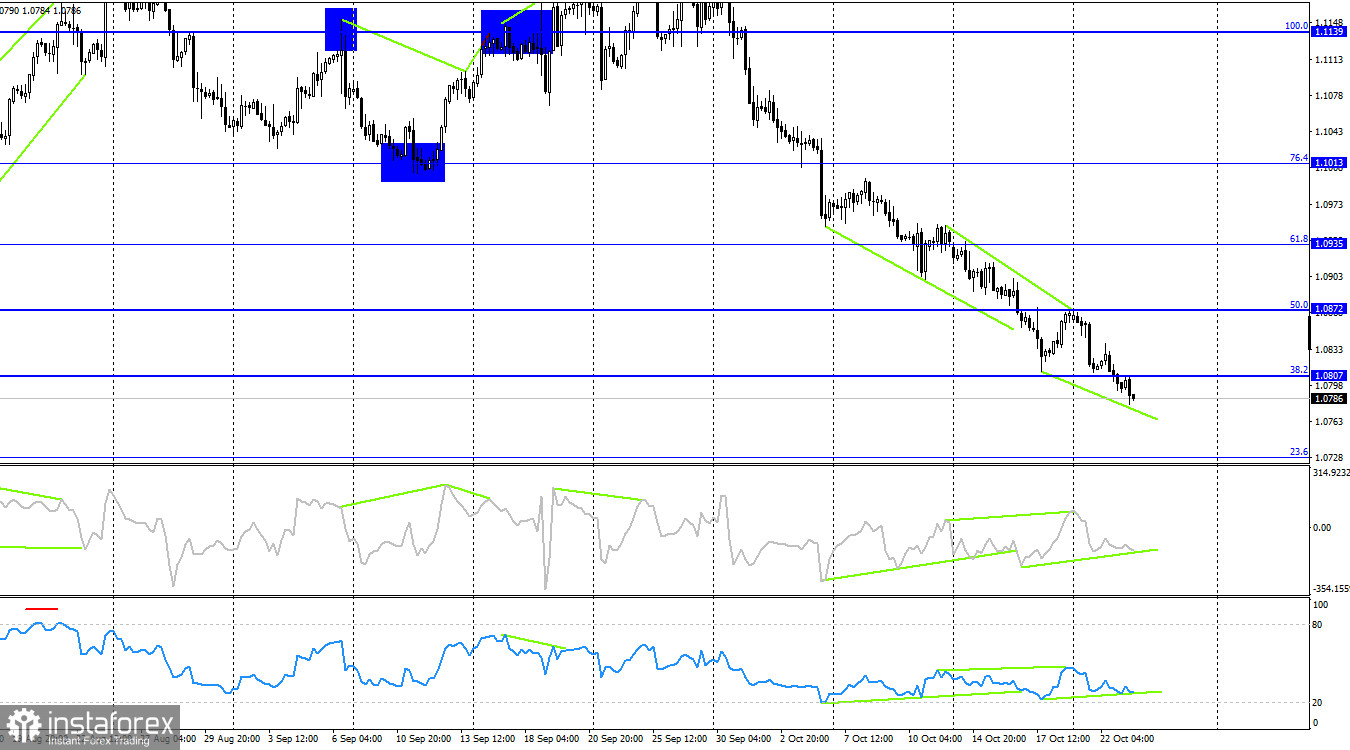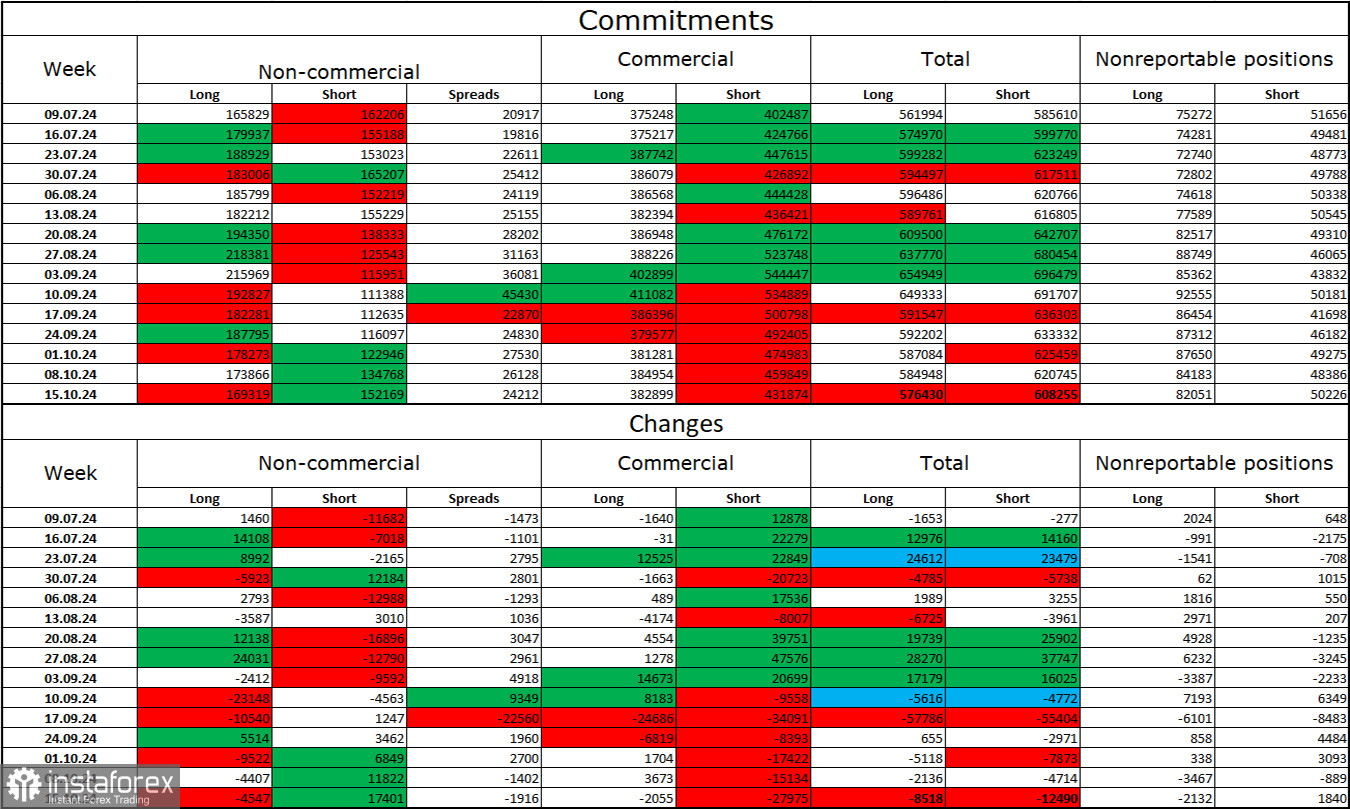On Tuesday, the EUR/USD pair continued its decline. It ended the day in the support zone of 1.0781–1.0797. A rebound from this zone could suggest a reversal and some upward movement toward the 161.8% corrective level at 1.0873. However, consolidation below this zone would increase the likelihood of further decline toward the next Fibonacci level of 261.8% at 1.0662. The euro continues to experience a near-freefall.

The wave structure is straightforward. The last completed upward wave (September 25-30) did not break the peak of the previous wave, while the new downward wave (which is still forming) has broken through the lows of the previous three waves. Thus, the pair has begun forming a new "bearish" trend. A corrective wave might occur soon, but the bulls have already lost their market initiative. Regaining it would require considerable effort, and it's unlikely they will succeed anytime soon.
The information background on Tuesday was fairly straightforward. The only event of the day was a speech by ECB President Christine Lagarde, who already caused a decline in the euro last week when the ECB decided to ease monetary policy not in December (as previously planned) but in October. Moreover, the ECB hinted that rates might also be cut in December. Yesterday, Lagarde emphasized that the direction of interest rates is clear and did not rule out the possibility of a future cut of 0.50%. The market was once again unprepared for this, as throughout 2024, its focus had been on the Fed. It has become evident that the ECB is cutting rates faster than traders expected, and in the near term, it might even consider a 50-point easing, which no one anticipated. As a result, the bears are bolstered by recent news and may continue their pressure on the market. I expect that the euro may continue to decline.

On the 4-hour chart, the pair consolidated below the 38.2% corrective level at 1.0807. For two weeks, "bullish" divergences have been forming on both indicators. However, they only suggest a possible start of a correction, as the trend has shifted to "bearish." At this point, traders are simply ignoring them. At the same time, "bearish" divergences have also formed, which are more significant in a "bearish" trend, but they have already played out. The decline in quotes could continue toward the 23.6% Fibonacci level at 1.0729.
Commitments of Traders (COT) Report:

In the latest reporting week, speculators closed 4,547 long positions and opened 17,401 short positions. The sentiment of the "Non-commercial" group turned "bearish" a few months ago, but bulls are currently dominant again. However, their momentum weakens each week. The total number of long positions held by speculators is now 169,000, while short positions total 152,000.
For the sixth consecutive week, large players have been shedding their positions in the euro. In my view, this could signal the start of a new "bearish" trend or at least a significant correction. The main factor behind the dollar's decline—expectations of Fed monetary easing—has already been factored in by the market, leaving fewer reasons to sell off the dollar. New factors could emerge over time, but for now, the growth of the US dollar is more likely. Technical analysis also indicates the beginning of a "bearish" trend. As a result, I am preparing for a prolonged decline in the EUR/USD pair.
News Calendar for the US and Eurozone:
Eurozone: ECB President Christine Lagarde Speech (14:00 UTC).US: Existing Home Sales (14:00 UTC).
On October 23, the economic calendar includes two events. The impact of the information background on market sentiment could be moderate.
EUR/USD Forecast and Trader Advice:
Selling opportunities for the pair were available after a close below the 1.1139 level on the 4-hour chart, with targets of 1.1081, 1.1070, 1.1013, and 1.0984. All targets have been reached. Selling the euro was also possible after a consolidation below 1.0873 (or after a rebound from this level) with a target of 1.0797, which has also been reached. I would only consider buying the pair after a rebound from the 1.0781–1.0797 support zone, but it now appears that the bears might break through this level as well.
Fibonacci levels are drawn from 1.1003 to 1.1214 on the hourly chart and from 1.1139 to 1.0603 on the 4-hour chart.
 English
English 
 Русский
Русский Bahasa Indonesia
Bahasa Indonesia Bahasa Malay
Bahasa Malay ไทย
ไทย Español
Español Deutsch
Deutsch Български
Български Français
Français Tiếng Việt
Tiếng Việt 中文
中文 বাংলা
বাংলা हिन्दी
हिन्दी Čeština
Čeština Українська
Українська Română
Română

